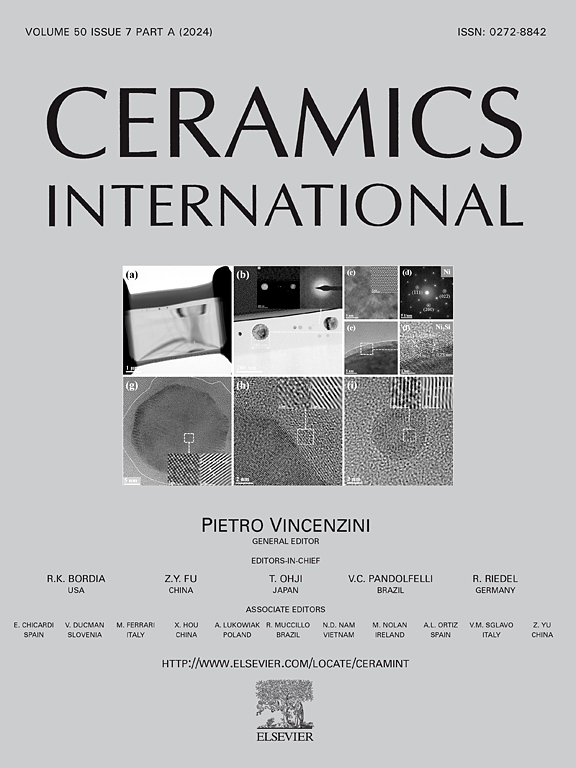Thin alumina wafer fabrication by vat photopolymerisation based additive manufacturing
IF 5.1
2区 材料科学
Q1 MATERIALS SCIENCE, CERAMICS
引用次数: 0
Abstract
In VAT Photopolymerization (VP), a ceramic slurry is cured layer by layer under light (200–760 nm) to fabricate ceramic parts from a 3D CAD model. Lithography-based Ceramic Manufacturing (LCM) a VP process presents a significant advancement over traditional tape-casting methods in the production of thin ceramic substrates. While tape casting is limited in its ability to produce substrates in a single step, with thickness in the range of 100s of microns, typically necessitating the lamination of multiple tapes to achieve greater thicknesses. LCM overcomes this limitation, and it offers precise control over layer thicknesses, ranging from 10 to 100 microns, and is capable of directly printing substrates in the range of several hundred microns. This capability not only streamlines the manufacturing process but also ensures more consistent quality and greater flexibility in substrate thickness, making LCM a superior technique for producing thin ceramic substrates. However, the main challenge in LCM is to make these substrates without any warpage. This study aims to nail down the root cause of the warpage by employing various characterization techniques (including FTIR, nano-indentation, SEM and TGA), and by identifying factors that contribute to the warpage. It is observed that layer-wise fabrication leads to a curing gradient owing to the multiple exposures of already cured layers, causing the final layers to cure less than the initial ones. Due to this, mechanical properties such as hardness and modulus are significantly different for the initial and final layers. In thin parts (<300 microns), a significant proportion of under-cured layers contribute to pronounced warpage. To make a warpage-free substrate, a post-curing strategy is proposed and examined. It is concluded that 80 % of the warpage can be reduced by the proposed post-curing method.
求助全文
约1分钟内获得全文
求助全文
来源期刊

Ceramics International
工程技术-材料科学:硅酸盐
CiteScore
9.40
自引率
15.40%
发文量
4558
审稿时长
25 days
期刊介绍:
Ceramics International covers the science of advanced ceramic materials. The journal encourages contributions that demonstrate how an understanding of the basic chemical and physical phenomena may direct materials design and stimulate ideas for new or improved processing techniques, in order to obtain materials with desired structural features and properties.
Ceramics International covers oxide and non-oxide ceramics, functional glasses, glass ceramics, amorphous inorganic non-metallic materials (and their combinations with metal and organic materials), in the form of particulates, dense or porous bodies, thin/thick films and laminated, graded and composite structures. Process related topics such as ceramic-ceramic joints or joining ceramics with dissimilar materials, as well as surface finishing and conditioning are also covered. Besides traditional processing techniques, manufacturing routes of interest include innovative procedures benefiting from externally applied stresses, electromagnetic fields and energetic beams, as well as top-down and self-assembly nanotechnology approaches. In addition, the journal welcomes submissions on bio-inspired and bio-enabled materials designs, experimentally validated multi scale modelling and simulation for materials design, and the use of the most advanced chemical and physical characterization techniques of structure, properties and behaviour.
Technologically relevant low-dimensional systems are a particular focus of Ceramics International. These include 0, 1 and 2-D nanomaterials (also covering CNTs, graphene and related materials, and diamond-like carbons), their nanocomposites, as well as nano-hybrids and hierarchical multifunctional nanostructures that might integrate molecular, biological and electronic components.
 求助内容:
求助内容: 应助结果提醒方式:
应助结果提醒方式:


